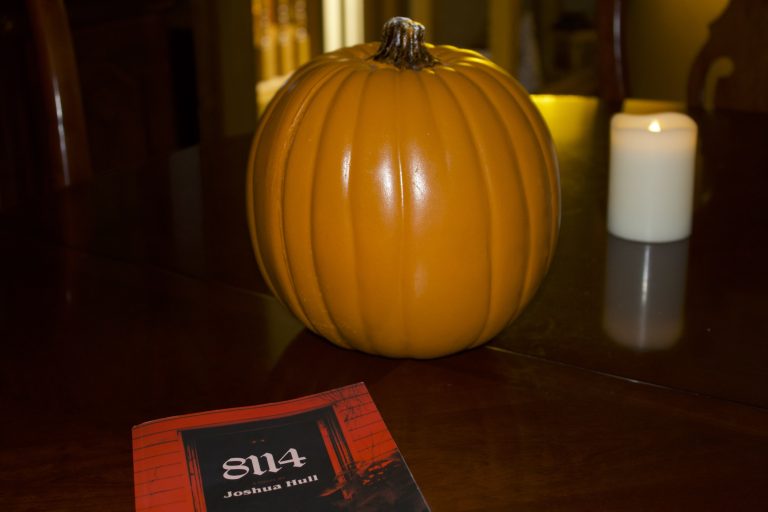

Throughout the year in India, there are many different festivals around which their holidays are centered, according to Tanvi Jhaveri, a student at the University of Indianapolis from Mumbai, India who is getting her master’s degree in health sciences. Although in India there are also Muslim festivals that follow the lunar calendar, Jhaveri is Hindu, and so she celebrates the Hindu festivals that follow the Hindu calendar.
One such festival celebrated in India is Diwali, the festival of lights. Diwali is usually celebrated in October or November for five days and involves a lot of lights, prayer, food and shopping, according to Jhaveri. It is her favorite festival for some of these reasons.
“First of all, it is a very beautiful festival, because everywhere there is lighting, and it’s all illuminated. You feel wonderful,” Jhaveri said. “Second, a lot of puja [worship] is done. [So] you feel really warm, and you feel that God is with you and around you. So it’s a very spiritual festival, I feel. Thirdly, the food and the snacks, which I help my mom make and also eat—I love that.”
Another focus of Diwali is making rangoli. Rangoli are colorful drawings and designs made on paper or on the floor using powdered colors, according to Jhaveri. Rangoli also can feature diyas, which are pots with cotton and oil inside that people light during Diwali. Jhaveri said that she always has enjoyed making rangoli, especially when she was able to make it on the floor in India.
Because Diwali is the festival of lights, lighting the houses is an important part of the festival. Jhaveri said that houses often are decorated with various kinds of lights, including diyas and fairy lights, as well as lights on the outside of the house. Although lighting does play an important role, a major part of Diwali is puja. A kind of candle is lit and Hindus worship a goddess through puja. Jhaveri said this is important because it brings Hindus closer to God. She said that after performing puja, they bust crackers. Since she has been in the United States, Jhaveri has missed being able to participate in Diwali as much as she would have.
“After coming here, I was not able to see or enjoy that festival,” she said. “So on FaceTime I did attend the puja. So when the puja was going on live, I was sitting and praying here, with my family, that way. That was one of the best memories.”
Coming up on Jan. 14 is Makar Sankranti, a kite-flying festival. For Makar Sankranti, the people of India fly colorful kites of all shapes and sizes, and according to Jhaveri, they have competitions with their kites.
“We have matches in the sky,” she said, “matches where we try to cut each other’s kites. So basically the thread has been sharpened by the user [with] glass. So you have to be careful while you are flying the kite; otherwise you will cut your finger. And people do cut their fingers, and still people will bandage it and fly a kite. So those matches going on in the sky are beautiful.”
According to Jhaveri, there are so many kites in the sky that it is easy to bump into someone and start a match. She said most of the time people will not know who they are starting a match with, but once both parties realize they are in a match, they try to take control of the other’s kite. The winner is the person who cuts the other person’s kite from the string. Jhaveri said this festival is particularly fun and beautiful because of this.
Ganesh Chaturthi is another important festival, which is celebrated on a grand scale in India, according to Jhaveri. Ganesh Chaturthi is the Elephant God festival; it usually takes place in September. Jhaveri said it was started by a political leader to strengthen patriotism within the country and as a reminder of the struggle for India’s independence, although it is to honor Ganesha, the god with the head of an elephant and the body of a human. Ganesh Chaturthi is a 10-day festival, with the first and last day being holidays.
About three months before Ganesh Chaturthi, small clay, eco-friendly statues resembling Ganesha are made to be sold to Indians. On the first day of the festival, they bring the idols home and construct and decorate a temple in which to keep the idol, according to Jhaveri.
“He [Ganesha] is made to sit in that temple, and then the temple and everything like that is decorated,” Jhaveri said. “Now, Lord Ganesha used to love sweets, so we make a lot of sweets as well. And then it is distributed to everybody, whoever visits the places for worshipping Ganesha, as pracade. Pracade is an offering that is given to God first and then given to the devotee.”
There are also larger idols in public places. Jhaveri said these can be 70-80 feet tall and draw long lines to worship in front of them. Worship is a very big part of Ganesh Chaturthi, according to Jhaveri, and puja is performed. Sometime after the first day of the festival, Indians bring their idol of Ganesha to a larger body of water to immerse him.
“Where I stay, there is a beach,” Jhaveri said. “On that day, the beach is very crowded because there are millions of people on the beach. People get the idols. They will worship the lord on the beach for one last time before the idol is immersed, and after that, the idol is taken right in the middle of the sea, so that the idol can be dropped and will not come up and float.”
She said that most people will sing a song, “Ganpati Bappa Morya Agle,” which means “Lord, you are great and please come early next year,” while they immerse the idol, but how each individual transports the idol varies from person to person.
“Some people will bring him quietly inside the home, or take him quietly in the car,” Javaheri said. “Some people will arrange bands, and they will walk from their homes to the beach with the bands and dance and take him that way.”
Other festivals celebrated in India include Navratri, or the festival of nine nights, which is celebrated in October or November and involves dressing up in colorful costumes and doing the garba, a dance performed in a circle with clapping and wooden sticks; Raksha Bandhan, or the festival of bonds, celebrated in August, during which sisters tie a rakhi, or sacred thread, to their brothers to show that they will make their brothers happy and their brothers will protect them; and the festival of colors in March, during which colored water is thrown and sprayed on people and colored powders are wet and applied to people.
Jhaveri said that celebrating Christmas is also common in India. She said in India, they have Christmas trees, visit Santa, bake cakes and give presents and sweets. Christmas can be more traditional for Christians.
“The Christians in India … go to the church or the the mosque,” Jhaveri said. “It is amazing. There is a famous church in India, in Mumbai particularly, where not only Christians but non-Christians as well will come and visit the church that day. And we have the cradle being put up, and everything is decorated in the church as well.”
Jhaveri said that as a child, she would put up a stocking for Santa on the window, because she felt that was the easiest place for him to leave her present. Like many people Jhaveri said, she was upset to find out that her mother was pretending to be Santa. She did say that when she was younger, she would visit Santa on Dec. 25, along with a lot of other children.
“There used to be a long queue for the children. And we used to get candies and gifts and stuff from that Santa Claus.”
Jhaveri said that the main difference between Christmas in the United States and India would be the season and the snow and that things are decorated more in the United States.
Worship, family and community play important roles in Indian festivals, according to Jhaveri. She said that she has missed being able to participate in some of the festivals since she has been in the United States but said she has been able to do more recently and plans to do what she can to celebrate the festivals in the United States.







